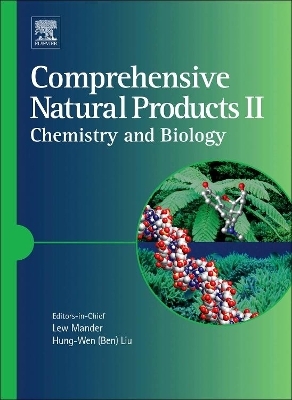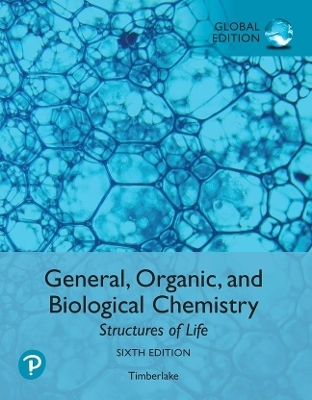
Comprehensive Natural Products II
Elsevier Science Ltd
978-0-08-045381-1 (ISBN)
This work presents a definitive interpretation of the current status of and future trends in natural products—a dynamic field at the intersection of chemistry and biology concerned with isolation, identification, structure elucidation, and chemical characteristics of naturally occurring compounds such as pheromones, carbohydrates, nucleic acids, and enzymes. With more than 1,800 color figures, Comprehensive Natural Products II features 100% new material and complements rather than replaces the original work (©1999).
Lew Mander was born in Auckland, New Zealand, where he completed his BSc and MSc (hons.) degrees at the University of Auckland (the latter with R. C. Cambie). After moving to Australia, he obtained his PhD in 1964 for his research on the structures of the Galbulimima alkaloids at the University of Sydney under the supervision of C. W. Shoppee, E. Ritchie, and W. C. Taylor. After 2 years of postdoctoral studies with R. E. Ireland, initially at the University of Michigan and then at the California Institute of Technology, he returned to Australia as a lecturer in organic chemistry at the University of Adelaide. He moved to the Australian National University in 1975 as a senior fellow in the Research School of Chemistry where he was subsequently appointed Professor in 1980, serving two periods as Dean (1981–85; 1992–95) and recently made emeritus. He was a Nuffield Fellow at Cambridge University in 1972 with A. R. Battersby, and a Fulbright Senior Scholar at the California Institute of Technology in 1977 and at Harvard University in 1986 (with D. A. Evans on both occasions), an Eminent Scientist of RIKEN, Saitama, Japan (1995–96), and a Distinguished Alumnus Professor, University of Auckland (1992). Also, he has been a visiting professor at the universities of Sydney, Cambridge, Alberta, Colorado, and Canterbury (New Zealand). He is a Fellow of the Australian Academy of Science and The Royal Society (London). His research interests are concerned with the development of methods and strategies for the assembly and manipulation of complex natural products with a special interest in the role of gibberellins in plant growth and development. Hun-wen (Ben) Liu was born in Taiwan and graduated with a BS degree in chemistry from Tunghai University (Taichung) in 1974. After 2 years of military service, he began his graduate study at Columbia University where he carried out research under Professor Koji Nakanishi. His work on the additivity relation in exciton-split circular dichroism curves and its application in structural studies of oligosaccharides earned him a PhD in 1981. He then joined Professor Christopher Walsh’s group at MIT as a postdoctoral fellow and became involved in the field of mechanistic enzymology. In 1984, he became an assistant professor in the Department of Chemistry at the University of Minnesota. He was promoted through the ranks to be the Distinguished McKnight University Professor in 1999. In 2000, he moved to the University of Texas at Austin, where he now holds the George H. Hitchings Regents Chair in Drug Design and is Professor of Medicinal Chemistry, Chemistry, and Biochemistry. His research lies at the crossroads of biological and organic chemistry, with particular emphasis on enzyme reaction mechanisms, natural product biosynthesis, protein function regulation, enzyme inhibitor design and synthesis, and metabolic pathway engineering. His multifaceted approach in studying various bioorganic problems has been recognized by several awards, including the National Institutes of Health Research Career Development Award (1990), the National Institute of General Medical Sciences MERIT Award (1999), the American Chemical Society Carbohydrate Chemistry Division Horace S. Isbell Award (1993), the American Chemical Society Organic Chemistry Division Nakanishi Prize (2007), and the American Chemical Society Biological Chemistry Division Repligen Award in Chemistry of Biological Processes (2008). He is an elected fellow of the American Association for the Advancement of Science (2005), the American Academy of Microbiology (2006), and the Academia Sinica (2008). He is an active member of a number of professional societies, and serves on many advisory boards, review panels, and editorial boards.
Natural Products Structural Diversity-I Secondary Metabolites: Organization and Biosynthesis – fatty acids, polyketide synthases (PKS), terpenes Natural Products Structural Diversity-II Secondary Metabolites: Sources, Structures and Chemical Biology - marine, microorganism, bacteria Development & Modification of Bioactivity – developing drugs from natural products; chemistry of key natural products (tea, cannabis etc) Chemical Ecology – hormones, pheromones, chemical defence and toxins, antifeedants, allelochemicals Amino Acids, Peptides and Proteins - natural, unnatural, sources and uses Carbohydrates, Nucleosides & Nucleic Acids – vaccines, synthesis, enzymatic and biosynthesis of carbohydrate molecules Cofactors –vitamins and co-factors, co-enzymes, thiamine, pyridoxal phosphate, Enzymes and Enzyme Mechanisms – evolution, mechanism and studies; Modern Methods for the Investigation of Natural Products – analytical techniques to investigate structures and methods used by natural product scientists. Index
| Erscheint lt. Verlag | 5.3.2010 |
|---|---|
| Mitarbeit |
Chef-Herausgeber: Lewis Mander, Hung-Wen Liu |
| Verlagsort | Oxford |
| Sprache | englisch |
| Maße | 192 x 262 mm |
| Gewicht | 9320 g |
| Themenwelt | Naturwissenschaften ► Chemie ► Organische Chemie |
| ISBN-10 | 0-08-045381-3 / 0080453813 |
| ISBN-13 | 978-0-08-045381-1 / 9780080453811 |
| Zustand | Neuware |
| Haben Sie eine Frage zum Produkt? |
aus dem Bereich

![Organic Chemistry plus Pearson Mastering Chemistry with Pearson eText [Global Edition] - Leroy Wade; Jan Simek](/media/110496757)
